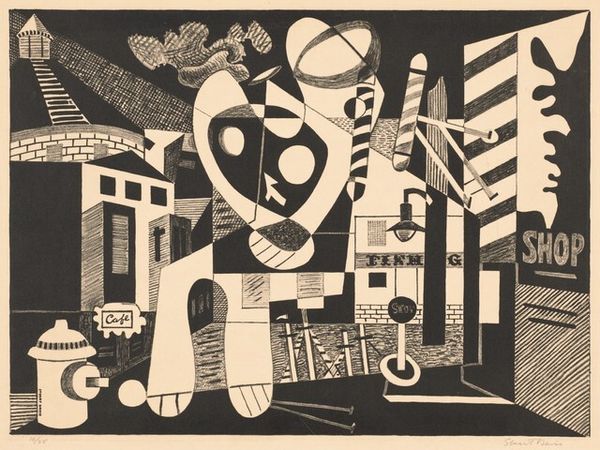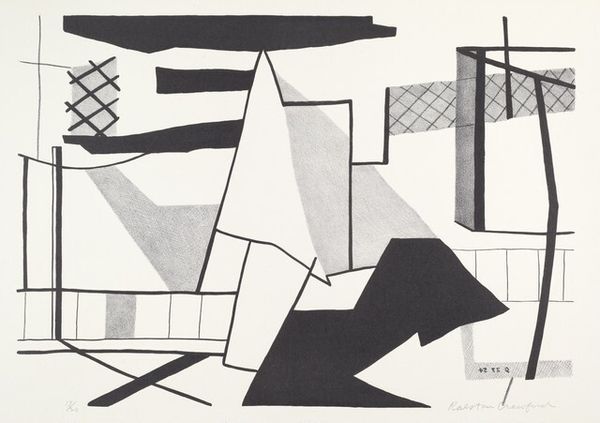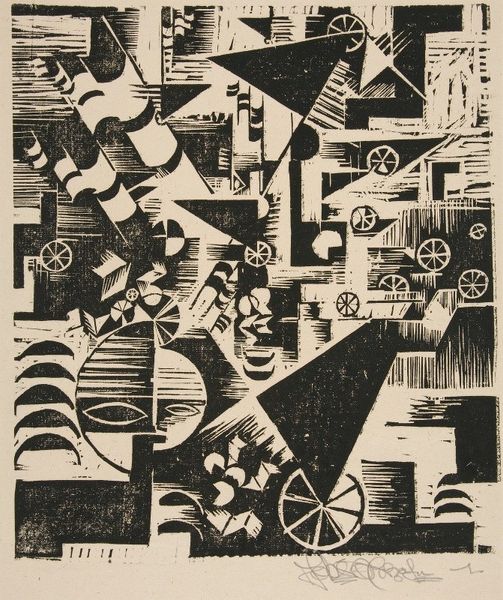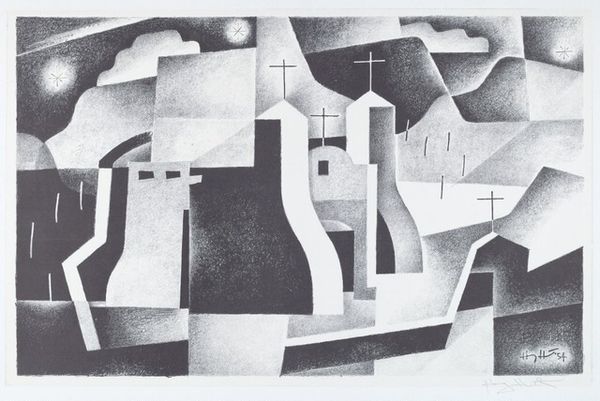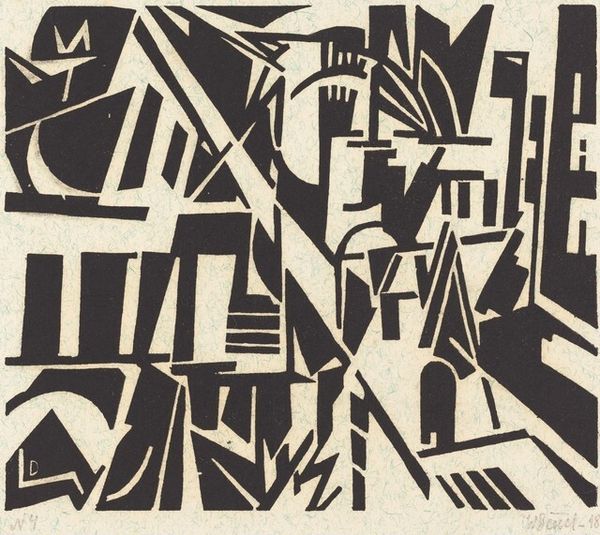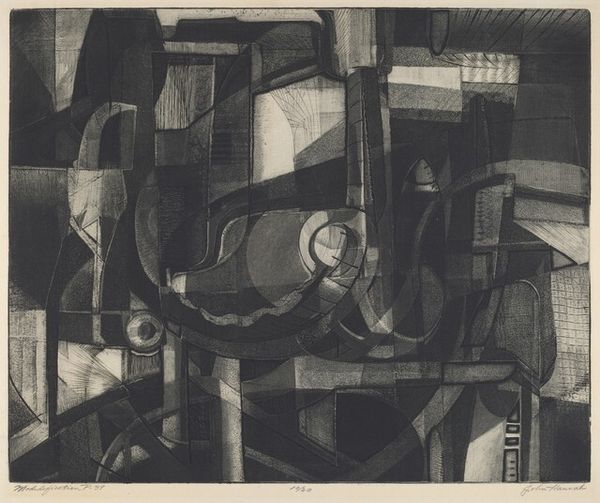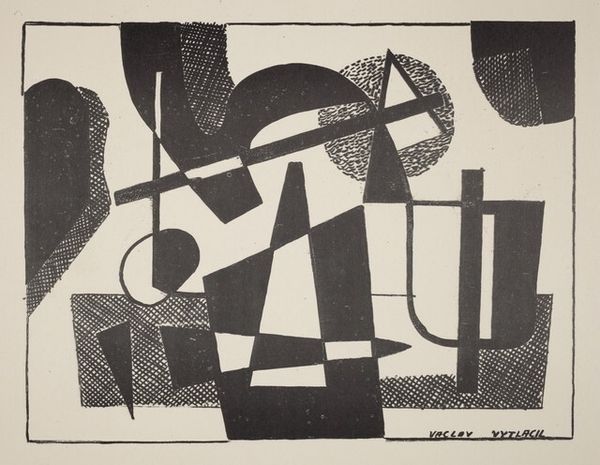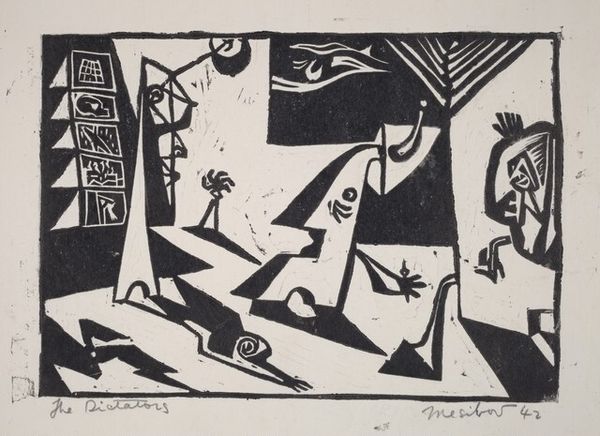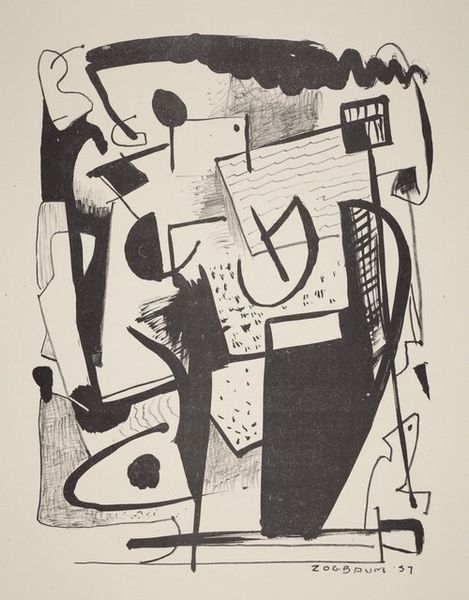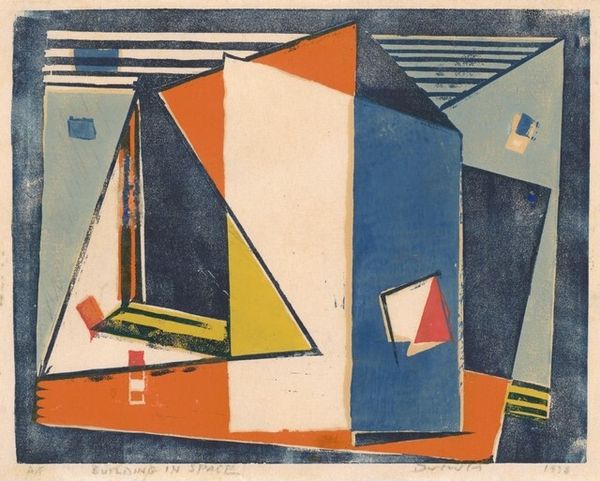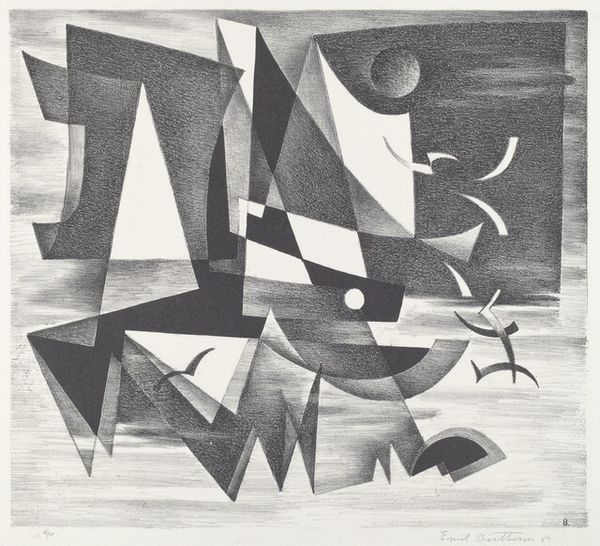
#
cubism
# print
#
geometric
#
abstraction
#
cityscape
#
modernism
Dimensions: image: 28 x 38.2 cm (11 x 15 1/16 in.) sheet: 51.1 x 66.1 cm (20 1/8 x 26 in.)
Copyright: National Gallery of Art: CC0 1.0
Curator: Stuart Davis created "Two Figures and El" in 1931, a print rendered in shades of black and white. What are your immediate thoughts on it? Editor: It’s dense, chaotic, almost a claustrophobic energy radiating from the compression of shapes. The hatching really heightens the texture, adding to the sense of materiality and the process by which this print was realized. Curator: Precisely! Davis's modernism embraced the energy of urban environments. Think of the intersecting forms – a street lamp, architectural details, fragments of signage – capturing the experience of being in a rapidly modernizing city. These fractured viewpoints evoke both excitement and alienation, wouldn't you say? And notice those “two figures,” barely distinguishable as human, almost swallowed by their environment. Editor: Yes, but I'm really drawn to the relationship between high and low art at play here. It is a print— a technique typically associated with mass production. The marks of the artist, the cross-hatching you mentioned—these lend it a tactile quality despite the reproducibility inherent in the print medium. Curator: An astute point. Mass production indeed has implications for labor. And regarding those figures, do you believe Davis intended to explore themes of anonymity or even dehumanization within these growing urban settings? Considering this piece emerged during the interwar period, could these abstracted individuals also reflect societal anxieties? Editor: It's impossible to divorce art from its social and historical framework, so the sense of disorientation probably speaks to real changes in the world. Curator: I agree. Davis lived in an era defined by immense political and societal upheaval, as did other modernists, though his particular abstract style certainly distinguishes him. Do you find Davis glorifies urban development or critiquing the impact of progress? Editor: Probably some of both! But consider too that black and white lends this image a raw almost industrial feel, calling attention to the physical realities and the processes that made this work a physical object as much as an art statement. Curator: Certainly. He encourages a deeper understanding not just of the visual but also of its genesis as an artifact. His geometric landscapes can then suggest layers beyond formal representation. Editor: Exactly, Stuart Davis used the language of Cubism and Modernism to challenge what constituted ‘high art’ at a time when it needed to be contested. Curator: Yes. Viewing “Two Figures and El” reminds us how abstraction can be profoundly linked to broader social conditions and the shifting relationship between humans and their surroundings. Editor: Indeed, art-making never exists in a vacuum, and analyzing materials and social forces at play gives it context for both artist and consumer.
Comments
No comments
Be the first to comment and join the conversation on the ultimate creative platform.
